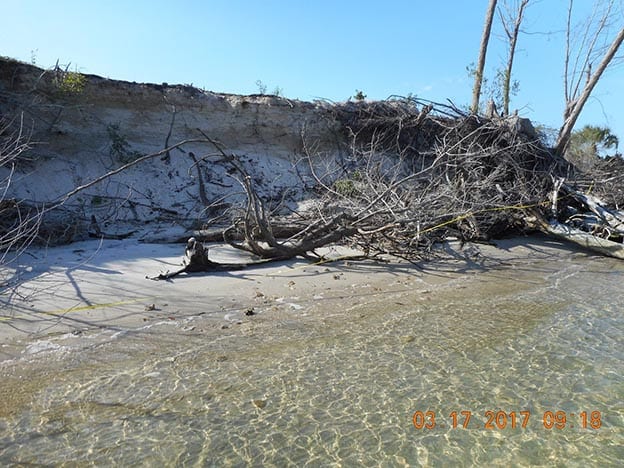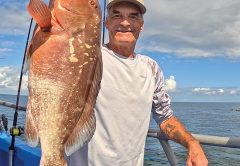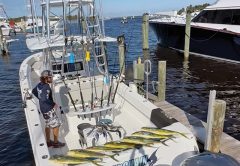St. Lucie County Artificial Reef Update

It’s oyster restoration season again and as temperatures start to fall volunteers will be constructing oyster modules for placement around the Indian River Lagoon. On September 30, several volunteers were helped by the Jitters & Critters 4H Club in creating 150 modules in one hour. Jack and Jill of the Treasure Coast, Inc. has already requested three bagging days this winter. If you or your group would like to join in their bagging, Jack and Jill will work with other volunteers. Upon request, other Saturdays are available for separate bagging events.

Volunteers construct oyster modules at Harbour Pointe Park and have developed a quick and efficient procedure for standardizing the modules. The volunteers first cut a length of Naltex netting and close one end with a hog nose ring and pliers. The netting is then stretched over a 10-inch diameter piece of PVC tube. The tube is inverted and the open end is fitted with an oversized funnel. Four-gallon buckets are used to pour oyster shell (a.k.a. culture material or “cultch”) into the funnel and down into the PVC tube. The tube is then lifted, exposing the oyster module, and the open end is then closed with a second hog nose ring.
The type of netting used in oyster reef restoration is very important to the St. Lucie County Artificial Reef Program, the Florida Oceanographic Society, and other oyster reef programs around the area. Naltex netting is the industry standard and is totally enveloped by oyster and invertebrate growth within one to two years. Concern with microplastics in the environment has led to the use of three types of biodegradable mesh. The latest material, produced by the bacterial polymerization of coconut palm oil, lasted two months in Wildcat Cove. This product shows promise and the County is awaiting a second strengthened version of the netting this month.
There are three oyster reef projects that St. Lucie County wants to start in 2018. The Indian Hills Oyster Reef will be designed to deflect stormwater emanating from the Indian Hills Stormwater Treatment Area. This stormwater has been cleaned and the volume of the discharges has been reduced but the velocity of discharge, especially after storms like Hurricane Irma, still causes scouring of adjacent seagrass beds. An oyster bed in this area will also provide additional habitat for the juvenile snook that frequent this area.
The second oyster reef that volunteers can help with is the Wildcat Cove oyster reef. Oyster reefs deployed in this water body have done exceptionally well. Wildcat Cove also has very limited wave energy and few seagrasses. This is an excellent location to test the durability of biodegradable netting.

Wesley’s Island is the site of a third oyster reef that volunteers may help with in 2018. Exotic vegetation on the island has been removed and replanted by the St. Lucie County Environmental Resources Department (ERD) and numerous volunteers. Early November, MMPS Environmental, Inc. (adopter of the island) visited Wesley’s Island to check the status of the island. Although the plantings have benefitted from rainfall, the shoreline continues to erode on the northwestern side of the island. ERD has offered plants to minimize the erosion on this side. Hopefully once this shoreline is stabilized, volunteers led by local resident Charlie Hayek, can begin to construct oyster reefs in this area.

For more information on the St. Lucie County Artificial Reef Program or volunteering for oyster reef project or contributing to MMPS Environment—a 501(c)3—for the purchase of large trees (cabbage palms, slash pine) on Wesley’s Island, contact Jim Oppenborn, St. Lucie County Coastal Resources Coordinator, at oppenbornj@stlucieco.org or (772) 462-1713. The program is also looking for donations of used four-gallon buckets for use by volunteers and sponsorship of T-shirts for oyster reef volunteers.




